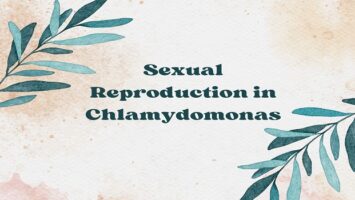Table of Contents
Reproductive Isolation:
The inability of different species to interbreed in nature is called reproductive isolation.
Isolating mechanisms are various contrivances for producing and maintaining reproductive isolation within individuals of a population or of different populations. These mechanisms may operate before or after fertilization and are classified into the following types:
- Geographical or spatial isolation is due to the presence of some physical or geographical barriers, like mountains, sea, water bodies, land, or even long distances. These prevent the prospective mates to meet.
- Ecological isolation is due to differences in the habitat.
- Seasonal or temporal isolation is due to differences in their breeding season and breeding period.
- Mechanical isolation is due to differences in the structure of copulatory organs or genitalia in animals and in the shape of flowers in plants.
- Physiological isolation is either due to the incapability of potential mates in mating or the inability of sperm to survive in the vagina of a female. As a result, the eggs are not fertilized.
- Gametic isolation is the failure of gametes to fuse and form a diploid zygote. It means when all geographical, ecological, physiological, and ethnological barriers do not exist, the gametes come together but fail to fuse.
In some cases, gametes are fused and the zygote is formed but the zygote either fails to develop or a hybrid formed is inviable, weak, or sterile.
Importance of Reproductive Isolation:
Reproductive isolation helps in:
- Maintaining genetic diversity in populations.
- Retaining the individuality of species by avoiding the free exchange of genetic material between members of different species.
- Origin of new species and thereby evolution, which is not possible without isolation.
- Reproductive isolation is the most important delimiting line between different species.
In the absence of reproductive isolation, there will be interbreeding amongst members of different populations, species, and other groups, and hence there will be a mixing of genes and the appearance of mixed phenotypes.
Failure of Reproductive Isolation:
Reproductive isolation is not a universal phenomenon. There are several examples, where the members of different species breed in captivity. Interspecific breeding may produce sterile or fertile offspring. For example:
(1) Sterile Offsprings- Horse (Equus calabasas) and ass (E. asinus) are different species but they can interbreed and produce sterile offspring. For example- a mule is from a cross between a male donkey and a mare, and a hinny resulting from a stallion and a female donkey.
Leopard frogs and bullfrogs produce hybrids but these die before attaining the reproductive stage.
(2) Fertile Offspring- Interbreeding of different species in captivity may produce fertile young ones. For example:
- Interbreeding between tiger and lioness produces fertile young ones, called tigons.
- Tigress and lion produce offspring called ligers.
- Hybrids of polar bear (Ursus maritimus) and Alaskan brown bear (Ursus arctos) are fertile.
- Hybrids of wild duck or mallard (Anas bosca) and pintail duck (Anas acuta) are fertile.
In nature, interbreeding between different species is prevented by biological or environmental barriers. Tigers and lions do not interbreed in nature due to different geographical distribution and occupying different habitats (geographical isolation). Interbreeding in bears is avoided due to long distances and mallard and pintail ducks fail to interbreed because of differences in mating and nesting habits.









Comments (No)